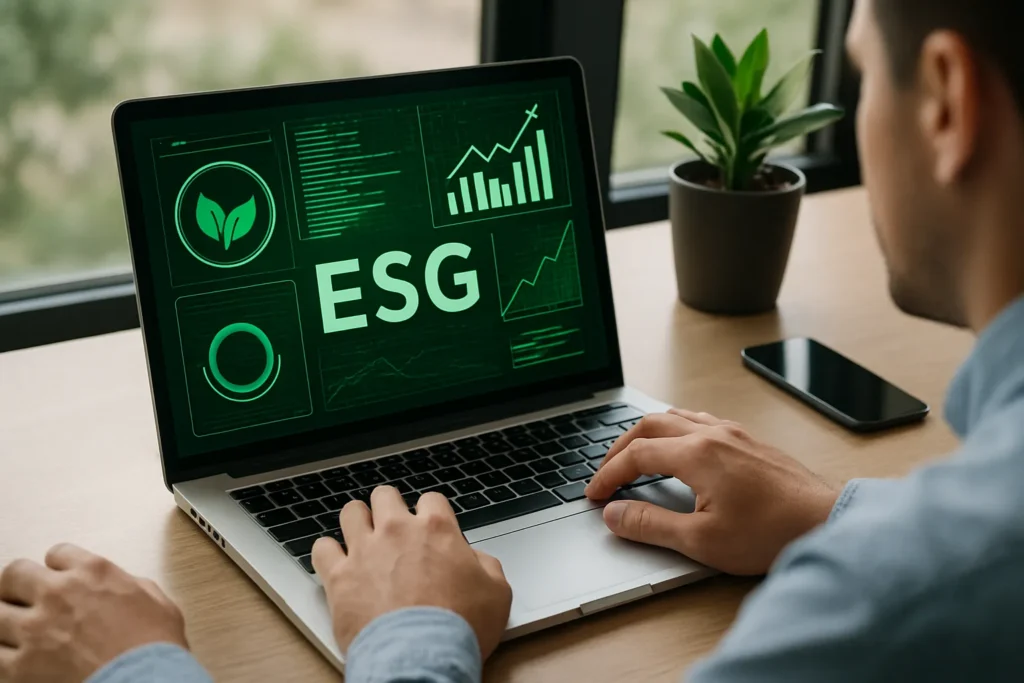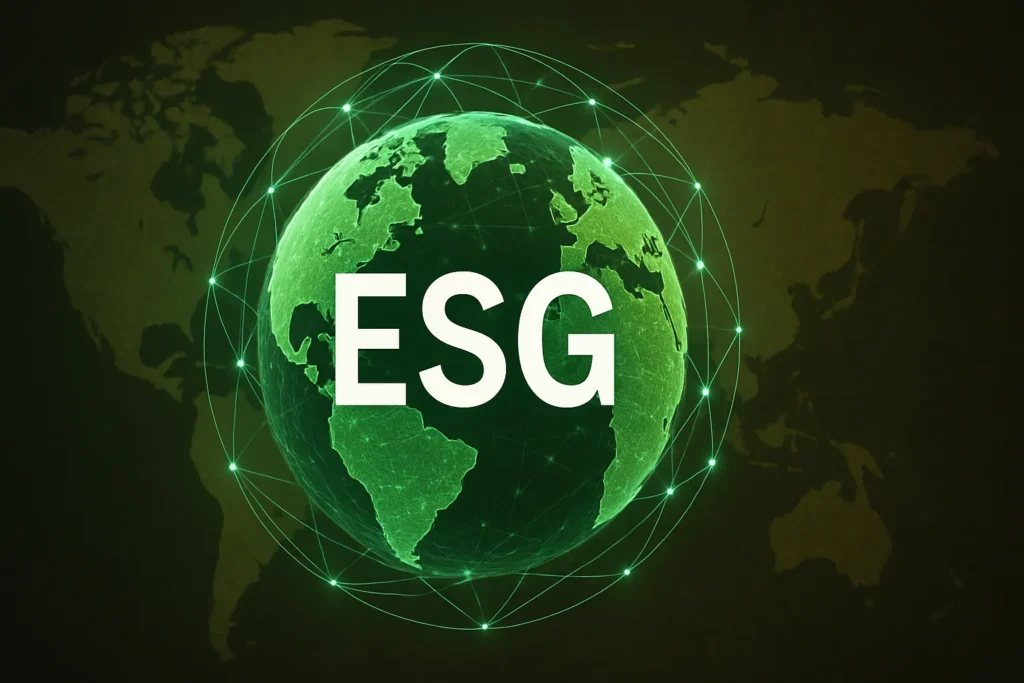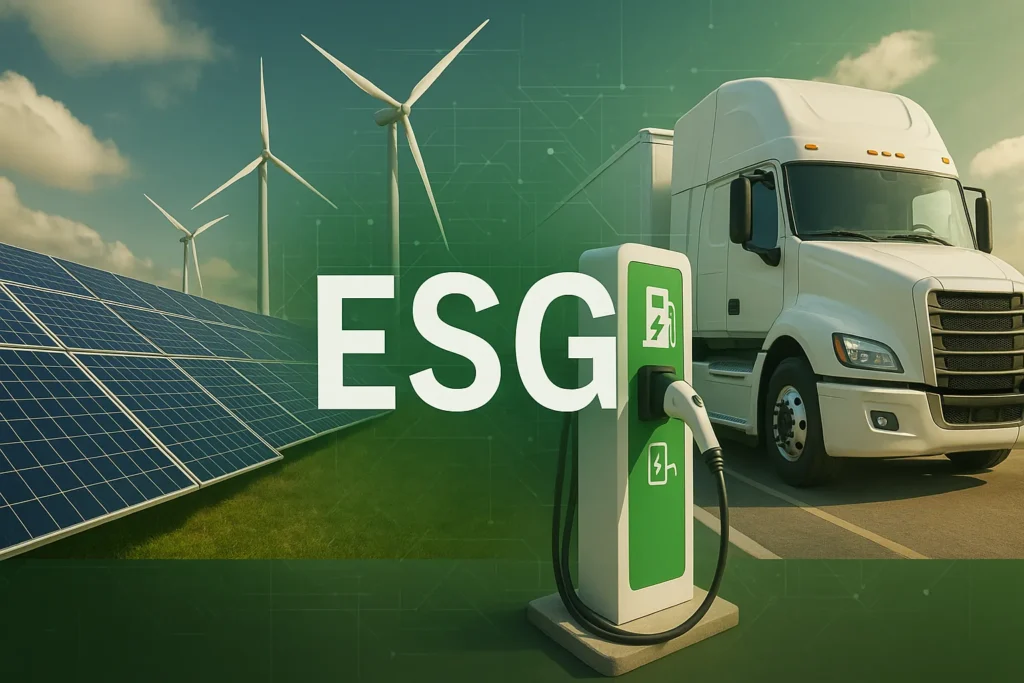Trying to invest sustainably? It’s not as simple as it sounds. You care about the planet. You care about people. So naturally, you want your money to reflect that. But the more you look into ESG investing, the more confusing it gets. Everyone claims to be “doing better for the world,” but there’s little clarity on what that actually means.
One fund highlights its commitment to reducing emissions. Another focuses on ethical supply chains. A third barely mentions climate action and leads with performance metrics. It’s hard to tell what’s real and what’s just clever branding.
You’re not alone. Stakeholder expectations are rising. At the same time, so is confusion. With new regulations, global volatility, and shifting definitions, ESG has started to look like a checklist of buzzwords rather than a tool for real impact.
This article cuts through the noise. You’ll learn what matters most in the future of ESG investing, discover trends to watch in 2025, and walk away ready to invest with confidence.
Why ESG Is Still a Mess (And Why That Matters)
There’s no such thing as a global ESG rulebook. Yet investors are expected to follow one. You would think that by 2025, ESG standards would be clearly defined across the board.

But instead, we’re seeing the opposite. In Europe, the Corporate Sustainability Reporting Directive is moving full steam ahead. Meanwhile, the U.S. can’t seem to agree. Some states are pushing for ESG-focused investments. Others are pulling money out of them altogether. The result? A confusing patchwork of policies that leaves investors caught in the crossfire.
This confusion doesn’t just slow things down. It opens the door to litigation risks. Companies trying to meet the changing face of sustainability reporting requirements often struggle to align with shifting expectations. At the same time, regulatory scrutiny is increasing. Investors face penalties not just for ignoring ESG, but for applying it incorrectly or inconsistently.
Add in the growing influence of bodies like the International Sustainability Standards Board, and the picture becomes even more complex. Everyone is watching, but no one’s holding the same map.
If you’re investing globally, this matters. You need a strategy that doesn’t just react to change, it anticipates it.
Investors Want Real Impact, Not Green Gloss
Ever feel like ESG investing is more about marketing than meaningful change? In 2025, that feeling is more common than ever. Many investors are growing tired of glossy sustainability reports that promise everything and prove very little.
They want results they can track. That means companies need to show real improvements, whether it’s cutting carbon emissions, paying living wages, or improving supply chain ethics.
According to the Social Investment Taskforce, real progress starts with transparency. Their research into investment strategies for social impact points to measurable results as the foundation of trust in ESG. Investors are paying close attention to how companies report on goals, milestones, and outcomes.
What matters now is proof. Can a company demonstrate its impact clearly and consistently? If not, it risks being ignored by the very people it’s trying to attract. This shift is pushing ESG toward a new standard.
How Tech Is Quietly Saving ESG’s Reputation
Let’s break down how technology is cleaning up ESG’s messy reputation. With so many ESG claims floating around, trust is wearing thin.

That’s where technology steps in. New tools are helping separate the real from the vague by tracking, verifying, and reporting ESG performance in ways that are actually useful.
Artificial intelligence is being used to scan company disclosures, identify greenwashing, and flag gaps in compliance. For instance, platforms like Owlin offer real-time ESG risk monitoring by analyzing news and data to detect potential issues promptly.
Meanwhile, blockchain is gaining ground as a way to create traceable supply chains. It helps confirm whether a product or material was sourced in line. Companies like OpenSC utilize blockchain to provide transparency in supply chains, ensuring products are ethically and sustainably sourced.
Pro Tip: When evaluating an ESG fund or company, check if they use third-party tech tools for reporting. It’s a small detail that tells you a lot about how serious they are.
The Financial System Is Quietly Rewiring Itself Around ESG
ESG isn’t a bonus filter anymore. It’s built into the way capital moves. In 2025, ESG is reshaping the financial system from the inside out. Investors are no longer asking, “Should we include ESG?” The question now is, “How deeply is it already embedded?”
Let’s break down what’s changing:
- Green bonds are going mainstream, with governments and large corporations using them to fund everything from clean energy to infrastructure. The global market hit over $600 billion in 2023 and continues to grow.
- Carbon markets are expanding, and cross-border mechanisms like the Carbon Border Adjustment Mechanism are affecting pricing and trade decisions. They’re also pressuring businesses to reduce emissions or pay for the gap.
- Sustainable finance is influencing how loans are structured. Lenders are adding ESG performance targets to interest rates and funding terms.
- Corporate governance now includes climate accountability. Boards are being asked to explain how sustainability ties into long-term business planning.
This isn’t theoretical. These changes are already shaping financial markets, and they’re only getting stronger. If you’re not factoring ESG into your investment decisions, you’re working with an outdated map.
ESG Isn’t Global, and That’s a Problem
One company, three continents, three completely different ESG playbooks. It’s easy to assume ESG investing works the same everywhere. But in reality, geography shapes everything from what counts as “sustainable” to how it’s reported, regulated, and rewarded.

Let’s take a closer look:
- Europe is leading the charge with mandatory frameworks like the Corporate Sustainability Reporting Directive. Companies are expected to show detailed climate disclosures and explain their social impact in plain terms.
- The US, on the other hand, is more fragmented. ESG is embraced in some states and dismissed in others. This inconsistency creates risk for multinational companies caught in the middle.
- Asia Pacific is still evolving. Some countries are pushing ESG forward, while others lag behind due to political, economic, or infrastructure challenges.
Now add this twist: many companies operate globally but are expected to meet regional ESG standards. That’s like running a single race but being judged by three different sets of rules.
For investors, it’s not just about finding strong ESG performers. It’s about understanding where and how those companies operate and whether they can hold up under conflicting demands.
Energy and Transport Are ESG’s New Battlegrounds
Watch energy and transport. These sectors are driving the ESG conversation now. Some industries face more pressure than others when it comes to sustainability. Right now, energy and transport are at the centre of that storm. They’re under intense scrutiny from regulators, investors, and stakeholders alike.

The Energy Transition Is Moving Faster Than Ever
Investors want more than carbon pledges. They want clear evidence that energy providers are cutting emissions, switching to renewables, and future-proofing their infrastructure. Fossil fuel dependence is now seen as a financial risk, not just an environmental one. Those slow to adapt may face shrinking capital access and shareholder pushback.
Transport Is the Hidden ESG Risk
Transport often slips under the radar in ESG discussions. Yet, it’s a major part of corporate emissions. Whether you’re moving goods by road, rail, sea, or air, those emissions are now being counted. Investors are starting to ask questions like: “What are you doing to clean up your logistics?”
Policy and Market Shifts Are Raising the Stakes
The Carbon Border Adjustment Mechanism and similar policies are changing how emissions are tracked across borders. Companies are being asked to show that their international operations meet stricter standards. Meanwhile, circular economy initiatives are making it clear that resource use and waste management aren’t just operational issues; they’re ESG concerns, too.
If you’re tracking ESG performance, this is where a lot of it plays out. These sectors are no longer side notes. They’re front and centre.
What Should You Do With All This?
Okay, but how do you apply all of this to your investment plan? You’ve seen the trends, the tech, and the challenges. Now let’s talk about what to do next.
ESG investing doesn’t have to be overwhelming. You just need the right tools, a clear approach, and a few smart habits.
Start With Your Current Portfolio
Don’t assume you have to start from scratch. Look at what you already own and ask a few key questions:
- Are these companies aligned with environmental or social objectives?
- Do they disclose their climate risk or sustainability strategies?
- Are they mentioned in ESG litigation news or flagged by third-party data?
Pro Tip: Use free tools like Morningstar’s ESG screener or your broker’s sustainability rating filter to audit your holdings.
Dig Into Reporting and Performance
Pay attention to companies that provide reliable, consistent sustainability disclosures. Look for alignment with global frameworks like the CSRD or the International Sustainability Standards Board. Consistency is a sign that they take it seriously.
Talk to Your Fund Manager or Adviser
Don’t be afraid to ask direct questions.
- How do they evaluate ESG commitments?
- What role do climate challenges and stakeholder expectations play in their decisions?
- Are they adapting to regulatory scrutiny or waiting to be told what to do?
A good adviser should be able to explain their ESG approach in plain language. If they can’t, that’s a red flag.
ESG Isn’t a Buzzword Anymore. It’s the New Standard.
If you’ve made it this far, you already know ESG isn’t going away. What used to be seen as a nice-to-have is now shaping how entire industries operate. Investors are shifting. Companies are adapting. Policies are catching up. And expectations are rising every day.
Throughout this guide, you’ve seen where ESG is heading and how to keep up with it. You’ve looked at how it’s changing financial markets, challenging industries like energy and transport, and raising the bar for what counts as responsible business.
So what now? Keep asking hard questions. Watch what companies do, not just what they say. And most of all, use ESG as a tool to invest in a future that delivers more than financial returns.
Doing good and doing well don’t have to be in conflict. If you want to learn more about practical, real-world ESG strategy, visit socialinvestmenttaskforce.org. You’ll find insights, tools, and resources designed to help investors make a difference without sacrificing results. It’s a smart place to dig deeper, no matter where you are in your ESG journey.


